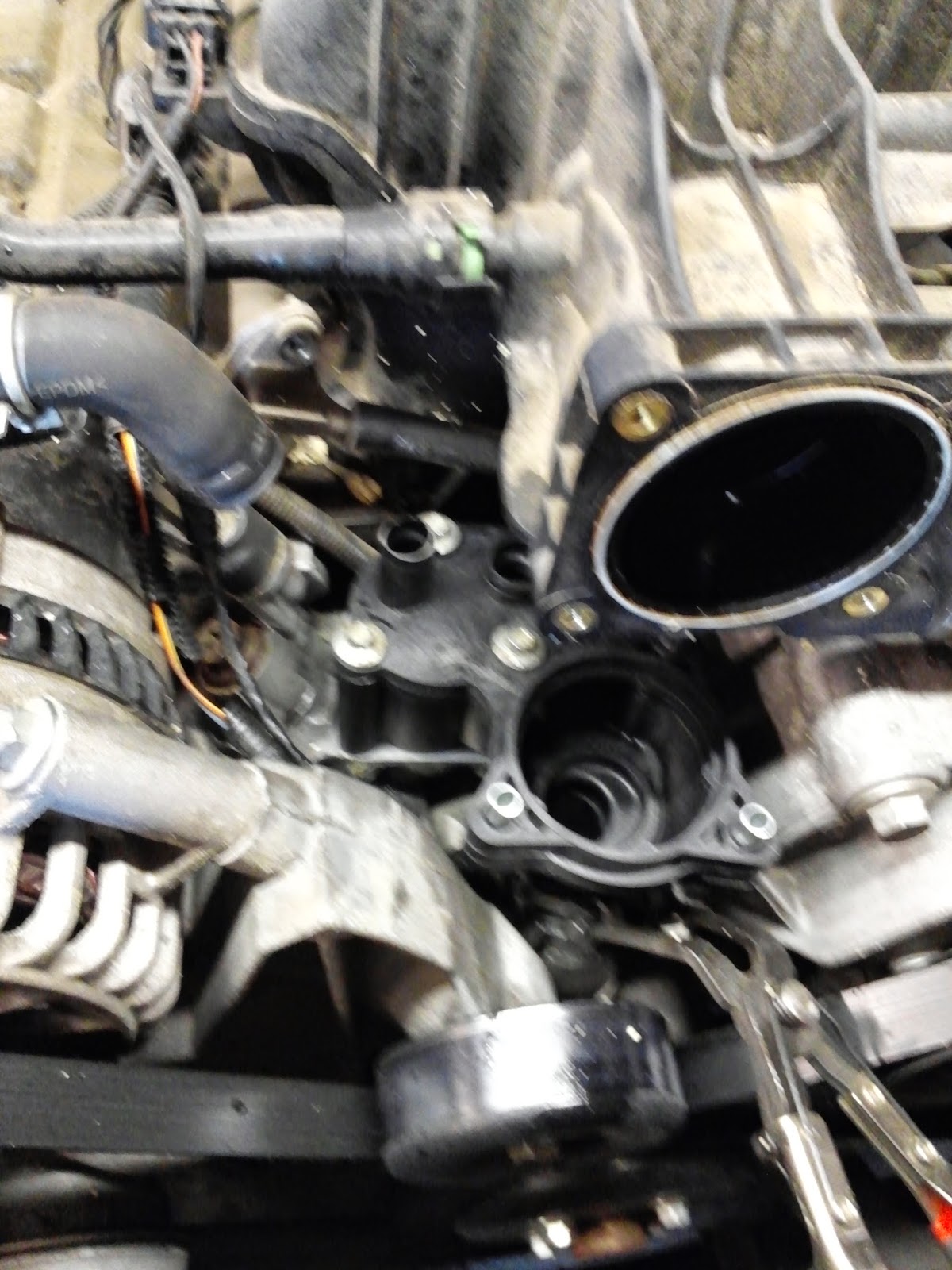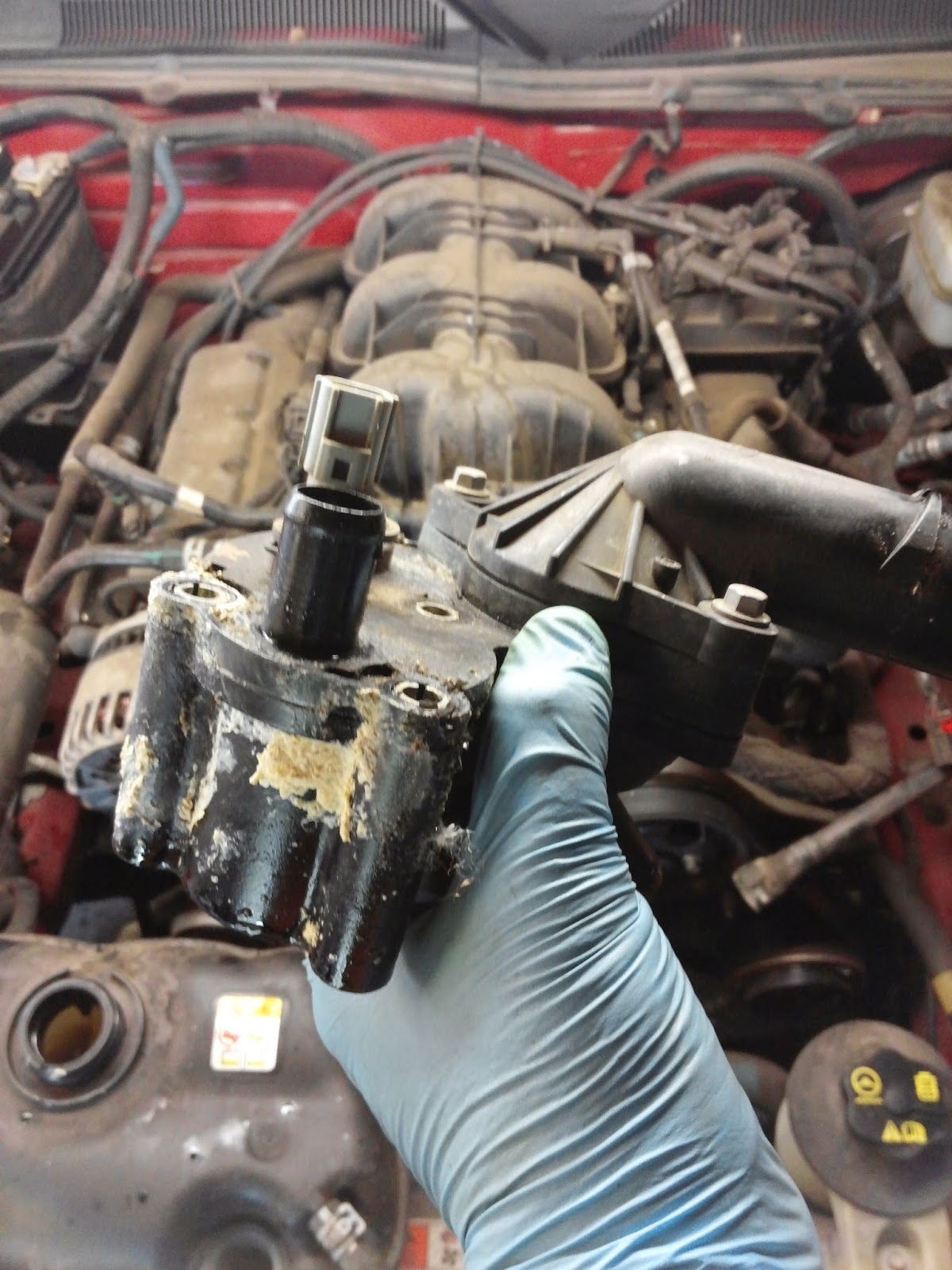This 2008 Ford Mustang 4.0 came into the shop with a complaint of a coolant leak. The customer had taken it to a Quick Lube for an oil change and they had advised him he was leaking coolant. Upon inspection, we determined the leak was coming from the lower thermostat housing (which is plastic). This is a very common problem on these and other Ford vehicles. We have replaced quite a few.
Below is a look under the hood. First, we must remove the air duct.
In the below picture, you will see the air duct has been removed.
The next step is to remove the throttle body chamber. There are four bolts (8 mm heads on them) and two electrical connectors. Below is a picture of the TB removed. We also removed the upper radiator hose from the upper thermostat housing.
The next step is to remove the three bolts holding the upper thermostat housing in place. We removed these bolts, the upper housing and the thermostat and gasket from the lower housing: see the picture below.
Now, the lower thermostat housing is readily visible. There are three bolts that secure it to the intake manifold. These three bolts must be removed, along with two hoses and an electrical connector. Once these are removed, the lower housing can be tilted and removed from the vehicle: see picture below.
Below are pictures of the removed lower thermostat housing. You can see it was leaking at the seam. This seam, however, is not repairable and the whole lower housing must be replaced.
Below is a picture of the engine with the lower housing removed and the area cleaned.
Below is a picture of all the parts needed to finish the repair. Everything is OE from Ford. We replaced the lower housing, the thermostat and three O-rings:
The lower thermostat housing:
The thermostat and three o-rings.
Below is a picture of the new lower housing:
Simply reverse the steps to install the new part. Be sure to torque the bolts to specifications. Remember, this housing is plastic and could easily crack if over-tightened.
We finished putting everything back together, filled the tank with coolant, started the engine and checked to make sure the coolant was full. Drove it down the road, let it idle in the bay and verified the leak was now gone. We shipped it to the customer. Another vehicle repaired and out the door.













